
William Goldman was an American novelist, playwright, and screenwriter. He first came to prominence in the 1950s as a novelist before turning to screenwriting. Among other accolades, Goldman won two Academy Awards in both writing categories—once for Best Original Screenplay for Butch Cassidy and the Sundance Kid (1969) and once for Best Adapted Screenplay for All the President's Men (1976).
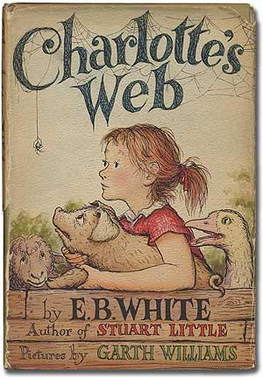
Charlotte's Web is a book of children's literature by American author E. B. White and illustrated by Garth Williams; it was published on October 15, 1952, by Harper & Brothers. The novel tells the story of a livestock pig named Wilbur and his friendship with a barn spider named Charlotte. When Wilbur is in danger of being slaughtered by the farmer, Charlotte writes messages in her web praising Wilbur, such as "Some Pig" and "Humble", to persuade the farmer to let him live.
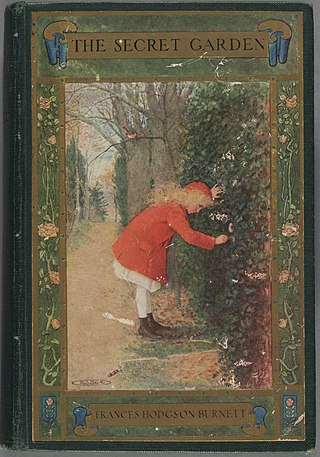
The Secret Garden is a novel by Frances Hodgson Burnett first published in book form in 1911, after serialisation in The American Magazine. Set in England, it is one of Burnett's most popular novels and is seen as a classic of English children's literature. Some of Burnett's other popular novels include Little Lord Fauntleroy, The Lost Prince and A Little Princess. Several stage and film adaptations have been made of The Secret Garden. The American edition was published by the Frederick A. Stokes Company with illustrations by Maria Louise Kirk and the British edition by Heinemann with illustrations by Charles Heath Robinson.
Cynthia Rylant is an American author and librarian. She has written more than 100 children's books, including works of fiction, nonfiction, and poetry. Several of her books have won awards, including her novel Missing May, which won the 1993 Newbery Medal, and A Fine White Dust, which was a 1987 Newbery Honor book. Two of her books are Caldecott Honor Books.

Susanna Moore is an American writer and teacher. Born in Pennsylvania but raised in Hawaii, Moore worked as a model and script reader in Los Angeles and New York City before beginning her career as a writer. Her first novel, My Old Sweetheart, published in 1982, earned a PEN Hemingway nomination, and won the Prize for First Fiction from the American Academy of Arts and Letters. She followed this with The Whiteness of Bones in 1989, and her third novel, Sleeping Beauties, in 1993. All three of these novels were set in Hawaii and charted dysfunctional family relationships.
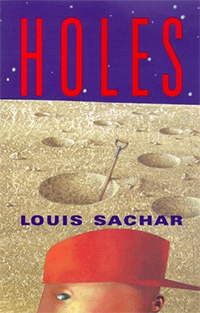
Holes is a 1998 young adult novel written by Louis Sachar and first published by Farrar, Straus and Giroux. The book centers on Stanley Yelnats, who is sent to Camp Green Lake, a correctional boot camp in a desert in Texas, after being falsely accused of theft. The plot explores the history of the area and how the actions of several characters in the past have affected Stanley's life in the present. These interconnecting stories touch on themes such as labor, boyhood and masculinity, friendship, meaning of names, illiteracy, and elements of fairy tales.

The Other Boleyn Girl (2001) is a historical novel written by British author Philippa Gregory, loosely based on the life of 16th-century aristocrat Mary Boleyn of whom little is known. Inspired by Mary's life story, Gregory depicts the annulment of one of the most significant royal marriages in English history and conveys the urgency of the need for a male heir to the throne. Much of the history is highly distorted in her account.

Incidents in the Life of a Slave Girl, written by herself is an autobiography by Harriet Jacobs, a mother and fugitive slave, published in 1861 by L. Maria Child, who edited the book for its author. Jacobs used the pseudonym Linda Brent. The book documents Jacobs's life as a slave and how she gained freedom for herself and for her children. Jacobs contributed to the genre of slave narrative by using the techniques of sentimental novels "to address race and gender issues." She explores the struggles and sexual abuse that female slaves faced as well as their efforts to practice motherhood and protect their children when their children might be sold away.

The Terminal Man is a novel by American writer Michael Crichton. It is his second novel under his own name and his twelfth overall, and is about the dangers of mind control. It was published in April 1972, and also serialized in Playboy in March, April, and May 1972. In 1974, it was made into a film of the same name.
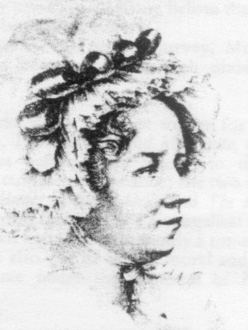
Mary Martha Sherwood was a nineteenth-century English children's writer. Of her more than four hundred works, the best known include The History of Little Henry and his Bearer (1814) and the two series The History of Henry Milner (1822–1837) and The History of the Fairchild Family (1818–1847). Her evangelicalism permeated her early writings, but later works cover common Victorian themes such as domesticity.
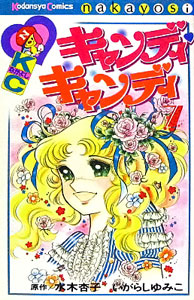
Candy Candy is a Japanese series created by Japanese writer Keiko Nagita under the pen name Kyoko Mizuki. The main character, Candice "Candy" White Ardley, is a blonde girl with freckles, large emerald green eyes and long hair, worn in pigtails with bows. Candy Candy first appeared as a manga in April 1975, written by Mizuki and illustrated by manga artist Yumiko Igarashi, a collaboration which was put together by the Japanese magazine Nakayoshi who were interested in recreating a "masterpiece" manga in the same vein as Heidi, Anne of Green Gables and other famous classic titles of literature read predominantly by young girls. The manga series ran for four years and won the 1st Kodansha Manga Award for shōjo in 1977. The story was adapted into an anime series by Toei Animation. There are also three animated short films.

The Witch of Blackbird Pond is a children's novel by American author Elizabeth George Speare, published in 1958. The story takes place in late 17th-century New England. It won the Newbery Medal in 1959.

The Princess Bride: S. Morgenstern's Classic Tale of True Love and High Adventure, The "Good Parts" Version is a 1973 fantasy romance novel by American writer William Goldman. The book combines elements of comedy, adventure, fantasy, drama, romance, and fairy tale. It is presented as an abridgment of a longer work by the fictional S. Morgenstern, and Goldman's "commentary" asides are constant throughout. It was originally published in the United States by Harcourt Brace, then later by Random House, while in the United Kingdom it was later published by Bloomsbury.

Lois Lenore Lenski Covey was a Newbery Medal-winning author and illustrator of picture books and children's literature. Beginning in 1927 with her first books, Skipping Village and Jack Horner's Pie: A Book of Nursery Rhymes, Lenski published 98 books, including several posthumously. Her work includes children's picture books and illustrated chapter books, songbooks, poetry, short stories, her 1972 autobiography, Journey into Childhood, and essays about books and children's literature. Her best-known bodies of work include the "Mr. Small" series of picture books (1934–62); her "Historical" series of novels, including the Newbery Honor-winning titles Phebe Fairchild: Her Book (1936) and Indian Captive: The Story of Mary Jemison (1941); and her "Regional" series, including Newbery Medal-winning Strawberry Girl (1945) and Children's Book Award-winning Judy's Journey (1947).

Things Not Seen is a first-person novel written by Andrew Clements and his third novel after Frindle and The Landry News. The title is apparently taken from Hebrews 11:1, "Now faith is the substance of things hoped for, the evidence of things not seen" in the King James Version of the Bible. The book was originally released in 2002 by Philomel Books, an imprint of Penguin Group, but was re-released in 2006 as a platinum edition by Puffin. The platinum edition includes a short interview with Andrew Clements and a redesigned cover.
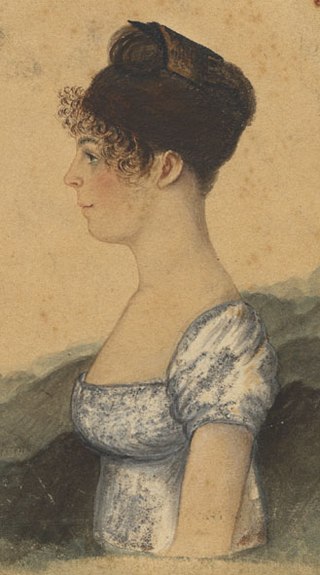
Susanna Rowson, née Haswell, was an American novelist, poet, playwright, religious writer, stage actress, and educator, considered the first woman geographer and supporter of female education. She also wrote against slavery. Rowson was the author of the 1791 novel Charlotte Temple, the most popular best-seller in American literature until Harriet Beecher Stowe's Uncle Tom's Cabin was published serially in 1851–1852, and authored the first human geography textbook Rowson's Abridgement of Universal Geography in 1805.

Charlotte Temple is a novel by British-American author Susanna Rowson, originally published in England in 1791 under the title Charlotte, A Tale of Truth. It tells the story of a schoolgirl, Charlotte Temple, who is seduced by a British officer and brought to America, where she is abandoned, pregnant, sick and in poverty. The first American edition was published in 1794 and the novel became a bestseller. It has gone through over 200 American editions. Late in life, the author wrote a sequel that was published posthumously.

Judith Quiney, née Shakespeare, was the younger daughter of William Shakespeare and Anne Hathaway and the fraternal twin of their only son Hamnet Shakespeare. She married Thomas Quiney, a vintner of Stratford-upon-Avon. The circumstances of the marriage, including Quiney's misconduct, may have prompted the rewriting of Shakespeare's will. Thomas was struck out, while Judith's inheritance was attached with provisions to safeguard it from her husband. The bulk of Shakespeare's estate was left, in an elaborate fee tail, to his elder daughter Susanna and her male heirs.
William Ferdinand Brown was an American playwright best known for writing the book of the musical, The Wiz (1974), an adaptation of L. Frank Baum's The Wonderful Wizard of Oz with music and lyrics by Charlie Smalls, for which he received a nomination for the Tony Award for Best Book of a Musical.

Caucasia (1998) is the first novel written by American author, Danzy Senna. It is the coming-of-age story of two multiracial girls, Birdie Lee and her sister Cole, who have a Caucasian mother and an African American father. The novel is set in Boston, Massachusetts, during the turbulent mid-1970s.


















